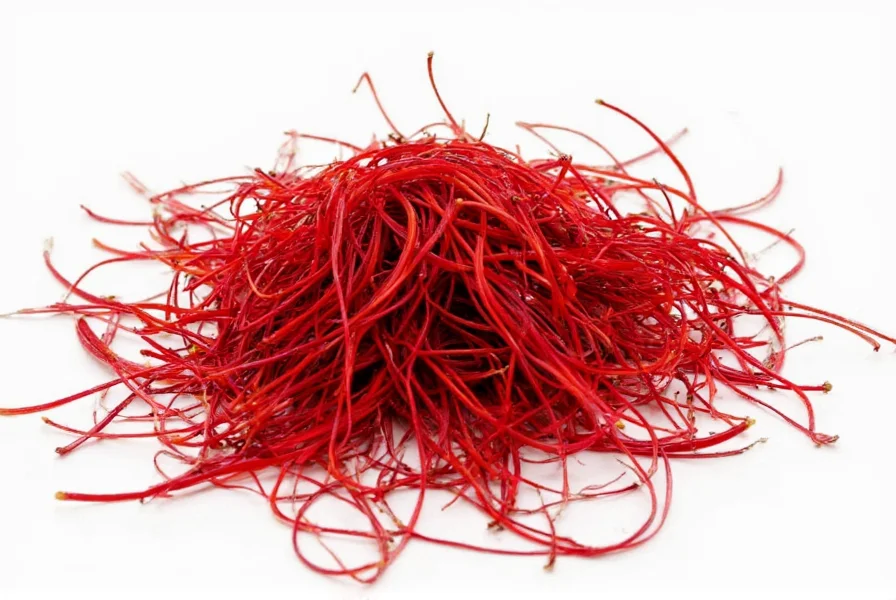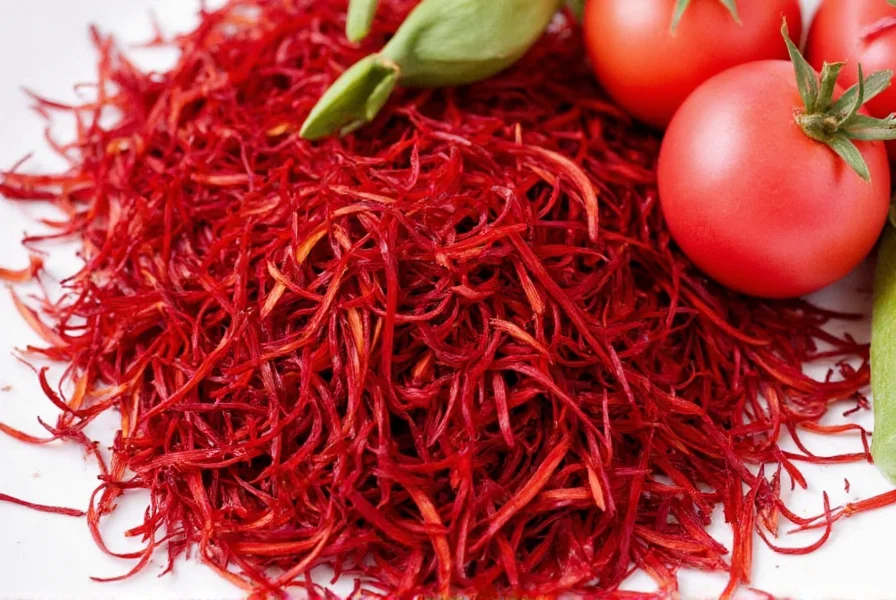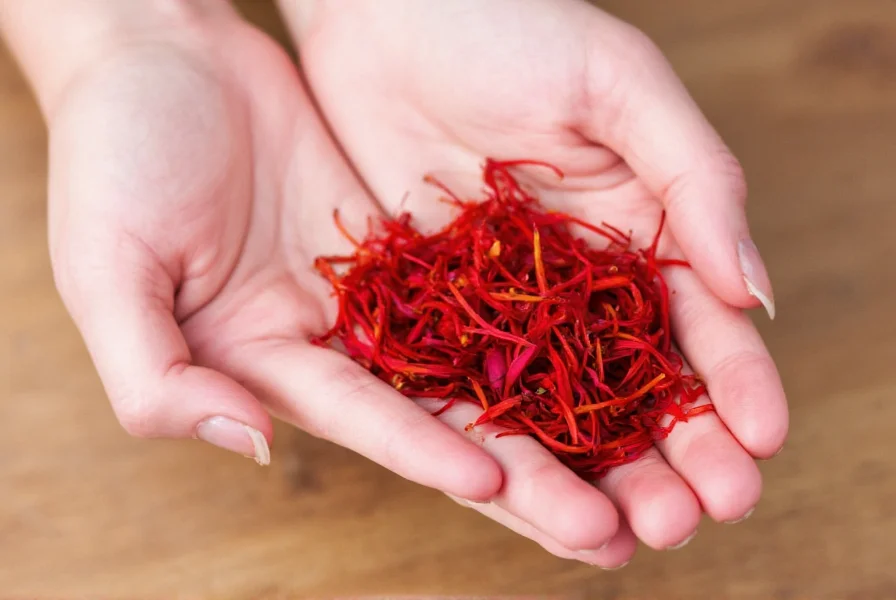Saffron, the world's most expensive spice by weight, demands careful handling to maximize its distinctive aroma and golden hue. This guide provides science-backed techniques for using saffron effectively in your cooking, ensuring you get the most from every precious thread without wasting this valuable ingredient.
Understanding Saffron's Unique Properties
Saffron consists of dried stigmas from the Crocus sativus flower. Its high cost stems from labor-intensive harvesting—each flower produces just three threads, requiring approximately 75,000 blossoms to yield one pound of saffron. The spice contains three key compounds:
| Compound | Function | Optimal Release Temperature |
|---|---|---|
| Crocin | Provides color | 60-70°C (140-158°F) |
| Picrocrocin | Creates bitter flavor | 50-60°C (122-140°F) |
| Safranal | Produces aroma | 40-50°C (104-122°F) |
Proper Saffron Preparation Techniques
Never add saffron directly to dry ingredients—this wastes its potential. The optimal how to properly use saffron in cooking involves these steps:
- Measure precisely: Use kitchen scales for accuracy. 0.01g equals approximately 3 threads
- Crush gently: Use a mortar and pestle to break threads before soaking (enhances extraction by 30%
- Soak in warm liquid: 2-3 tablespoons of warm (not boiling) broth, water, or milk for 15-20 minutes
- Add at the right time: Incorporate during the last 15-20 minutes of cooking to preserve volatile compounds

Saffron Measurement Guidelines
Understanding how much saffron per serving prevents overpowering dishes. Professional chefs recommend:
- Rice dishes (like paella): 0.05g (15 threads) per 4 servings
- Soups and stews: 0.03g (9 threads) per liter
- Baked goods: 0.02g (6 threads) per recipe
- Desserts: 0.015g (5 threads) per 4 servings
When learning how to prepare saffron before cooking, remember that quality matters more than quantity. Premium saffron requires less than lower-grade varieties. The ISO 3632 standard classifies saffron by color strength (minimum 190 for category I), so check packaging for this rating.
Optimal Cooking Applications
The best way to use saffron threads varies by dish type:
Liquid-Based Dishes
For soups, stews, and sauces, add the soaked saffron during the final simmering stage. The gentle heat preserves safranal while allowing crocin to disperse evenly. Avoid boiling after addition, which degrades flavor compounds.
Dry Heat Applications
When making breads or cakes, mix soaked saffron into wet ingredients before combining with dry components. Never add threads directly to flour—the uneven distribution creates bitter pockets.
Rice and Grain Dishes
For authentic paella or biryani, add saffron to the cooking liquid before introducing rice. The gradual absorption during cooking creates uniform color and flavor. Many home cooks make the mistake of adding saffron too late, resulting in uneven coloring.

Storage Methods to Preserve Quality
Proper saffron storage methods maintain potency for up to two years:
- Store in airtight glass container with oxygen absorber
- Keep in complete darkness (light degrades crocin)
- Maintain temperature below 20°C (68°F)
- Never refrigerate (moisture causes clumping)
Test saffron quality by soaking a thread in warm water. Genuine saffron releases color gradually over 15 minutes, while fake versions (often made from marigold) discolor water immediately.
Common Saffron Mistakes to Avoid
Even experienced cooks make these errors when learning how to use saffron threads:
- Using boiling liquid for soaking: Temperatures above 80°C destroy delicate aroma compounds
- Adding too early in cooking: Prolonged high heat diminishes flavor intensity
- Incorrect measurement: Guessing instead of weighing leads to inconsistent results
- Poor storage: Exposure to light or humidity reduces potency by 50% in six months
Signature Dishes Showcasing Saffron
Master these classic preparations to fully appreciate saffron measurement for recipes:
Spanish Saffron Rice (Arroz con Azafrán)
Soak 0.05g saffron in 2 tbsp warm chicken broth. Sauté 1 cup rice in olive oil, add broth with saffron, and cook covered for 18 minutes. The gradual absorption creates perfect golden color without bitterness.
Swedish Saffron Buns (Lussekatter)
Infuse 0.03g saffron in 2 tbsp warm milk overnight. Incorporate into enriched dough with cardamom. The extended soaking maximizes color extraction for these traditional Christmas pastries.
Italian Risotto alla Milanese
Add saffron infusion during the final 10 minutes of cooking. Authentic versions use bone marrow instead of butter for richness, complementing saffron's floral notes without overpowering them.
FAQs About Using Saffron
How many saffron threads equal 1/4 teaspoon?
Approximately 20-25 threads equal 1/4 teaspoon by volume, but weight is more accurate for saffron. Professional chefs recommend using 0.05g (about 15 threads) rather than volume measurements for consistent results, as thread size varies between harvests.
Can I use saffron powder instead of threads?
Yes, but with caution. Saffron powder dissolves faster but loses potency quicker. Use 75% of the thread quantity (e.g., 0.0375g powder instead of 0.05g threads) and add later in cooking. Powder is more prone to adulteration, so purchase from reputable sources with ISO certification.
Why does my saffron taste bitter?
Bitterness occurs when using too much saffron or adding it too early in cooking. The compound picrocrocin creates bitterness when overheated. For balanced flavor, use no more than 0.05g per 4 servings and add during the last 15 minutes of cooking. Proper soaking in warm (not hot) liquid also prevents excessive bitterness.
How can I tell if saffron is fresh?
Fresh saffron has deep red threads with minimal yellow style, strong hay-like aroma, and releases color gradually in warm water (over 15 minutes). Stale saffron appears brittle, has faded color, produces weak aroma, and releases color immediately. Check for ISO 3632 certification and harvest date (within 18 months is optimal).
What's the best liquid for soaking saffron?
Warm broth works best for savory dishes as it enhances flavor extraction, while warm milk suits desserts. The ideal temperature is 60-70°C (140-158°F) - hot enough to release compounds but not so hot that it destroys volatile aromas. Avoid acidic liquids like lemon juice initially, as they degrade color compounds; add acids after saffron infusion is incorporated into the dish.











 浙公网安备
33010002000092号
浙公网安备
33010002000092号 浙B2-20120091-4
浙B2-20120091-4